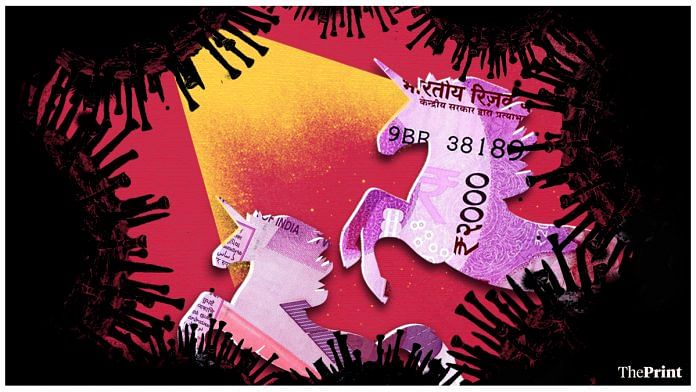India needs good news. Amidst the fear of the pandemic that has gripped the country, and the larger horror of not getting medical help if needed, Yeats’s foreboding seems to have become reality: “Things fall apart; the centre cannot hold; Mere anarchy is loosed upon the world”. So, yes, the country is in need of good news, or at least something else to think about. For all the grotesqueness of multiple ambulances waiting in readiness for cricketers taking part in the Indian Premier League (IPL), while they were in short supply for the actual sick and dying or dead, cricket did provide a form of escape, something else to think about. More seriously, for all those who have not lost hope for this country, one can do no better than draw attention to the expansive, big-picture change spelt out by Neelkanth Mishra, India Strategist for Credit Suisse, in his four-part article for Business Standard, published sequentially on 5, 14, 21 and 29 April. The opening shot was entitled “India’s changing corporate landscape”. While the IPL provided escapism, Mr Mishra’s series spells hope.
Briefly, Mr Mishra takes the argument beyond what this column did in January (“Unicorns coming of age”, 16 January), by contending that India has more than 100 unicorns (start-ups valued at more than a billion dollars), not 37 as previously reported. Mr Mishra’s broader message is that India is in the early stages of reshaping its corporate landscape, tracing a primary cause to the rise of private equity, which in an unusual twist has become a more important source of capital than the public-offer capital market. This source of abundant capital (mostly foreign) has allowed start-ups to scale up dramatically faster than older enterprises in their youth.
Mr Mishra links this to the “silent transformation” wrought by the expansion in one direction of tele-density, data use, and smartphone adoption (all of it much cheaper than before), and in another by the spread of all-weather rural roads and therefore rural electrification so that most homes now have an electric wire in them. These in turn have wrought multiple downstream changes and improved productivity overall. In his re-phrasing of the JAM trilogy (Jan Dhan-Aadhaar-Mobile), Mr Mishra goes over the familiar territory of financialisation, simplified by “India Stack” innovations like the Unified Payments Interface, which has helped India skip the credit card phase and go straight through to digital payments (30 per cent of the total last year, against 5 per cent five years ago), while Aadhaar has helped by simplifying know-your-customer processes.
In other words, multiple changes have gone into the creation of the unicorns that are now transforming some old businesses and creating new ones, ranging from e-commerce to fintech and edutech, but also in distribution and logistics. That in turn has helped the formalisation of the economy, and helped financial companies to tap into consumption habits and credit histories to expand credit to individuals on the one hand, while on the other, small businesses can scale up because of the creation of supply chains and easier credit.
Also Read: Is India back to being ‘Third World’? Irony of an aspiring superpower exposed by Covid crisis
Evidence of change
Parallel to this is the change in the IT landscape with the growth of software-as-a-service, where some 8,000 companies now operate by creating specialised software products using standardised language for pay-per-use — a big boost for small and medium businesses looking to harness IT at low cost. These will contribute (according to Nasscom) $15 billion in revenue by 2025. Mr Mishra forecasts that unicorns will multiply in a virtuous cycle of entrepreneurship, and their revenues account for 5 per cent of incremental GDP.
Many readers will be familiar with parts of this story, or even most of it, because the evidence of change is there all around us and indeed the story has been told before in bits and pieces. What Mr Mishra does, possibly for the first time, is fit the enterprise-level and sectoral changes into a coherent macro-picture of the larger transformation under way, and explain how it will shape the future. Without minimising today’s depressing evidence of systemic and government failures or causing offence to those whose lives may have been needlessly ruined, it may be worth bearing in mind that there is another side to the India story, and therefore reason for hope.
By Special Arrangement with Business Standard
Also Read: Modi govt has made a mockery of Covid crisis, high time it gets serious about real solutions



